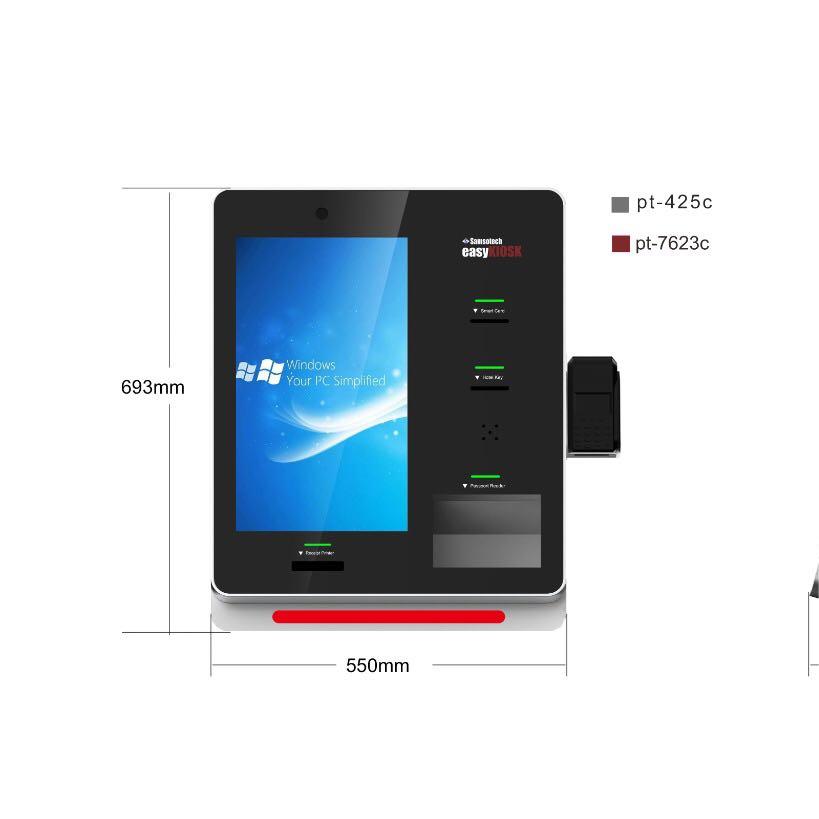Self-service kiosks require robust hardware to ensure reliable operation and a smooth user experience. Here are the key hardware components typically found in self-service kiosks:

1.Touchscreen Display**:
-Type**: Capacitive touchscreens are common for their responsiveness and durability.
-Size**: Typically ranges from 17 inches to 32 inches, depending on the kiosk's application and user interaction requirements.
-Resolution**: High-definition (HD) or Full HD resolution for clear display of information and user interfaces.
2.Computer/Processor**:
-CPU**: Intel Core processors (i3, i5, i7) or equivalent AMD processors, depending on the kiosk's processing needs (e.g., basic information retrieval vs. complex transactions).
-RAM**: Minimum 4GB RAM, with higher capacities (8GB or more) for multitasking and performance-intensive applications.
-Storage**: SSDs for fast boot-up times and data access, enhancing overall kiosk responsiveness.
3.Enclosure**:
-Material**: Typically made of durable materials like steel or aluminum to withstand public use and potential vandalism.
-Design**: Secure, tamper-resistant design with lockable access for maintenance.
-Weather Resistance**: Outdoor kiosks may require additional weatherproofing and protection against dust and moisture.
4.Payment Devices**:
-Card Reader**: EMV-compliant card reader for secure credit/debit card transactions.
-NFC Reader**: Near Field Communication (NFC) reader for contactless payments.
-Cash Acceptor/Dispenser**: If the kiosk handles cash transactions, integrated devices for accepting cash and dispensing change.
5.Barcode Scanner**:
- Used for scanning product barcodes or tickets in retail, ticketing, or check-in applications.
- Can be laser-based or image-based depending on the scanning distance and speed requirements.
6.Receipt Printer**:
- Thermal printer for issuing transaction receipts or tickets.
- Reliable and capable of handling high-volume printing in busy environments.
7.Connectivity**:
-Network**: Ethernet port for wired connectivity and Wi-Fi for wireless connectivity.
-USB Ports**: Multiple USB ports for connecting peripherals such as printers, scanners, or additional storage devices.
8.Operating System**:
- Windows or Linux-based operating system depending on software compatibility and security requirements.
- Customized kiosk software for managing user interfaces, transaction processing, and reporting.
-Power Supply**: Reliable power supply unit (PSU) with surge protection and backup options to ensure continuous operation.
-Security Features**: Encrypted communication for card transactions, physical security measures (e.g., locks, alarms), and compliance with data protection regulations.
-User Interface Design**: Intuitive touchscreen interface with clear instructions and accessibility features for users of all abilities.
-Maintenance and Support**: Regular maintenance schedules, remote monitoring capabilities, and responsive technical support to minimize downtime.
Choosing the right hardware components for a self-service kiosk depends on the specific application and environment where it will be deployed. Each component plays a crucial role in delivering a seamless and secure self-service experience to users.